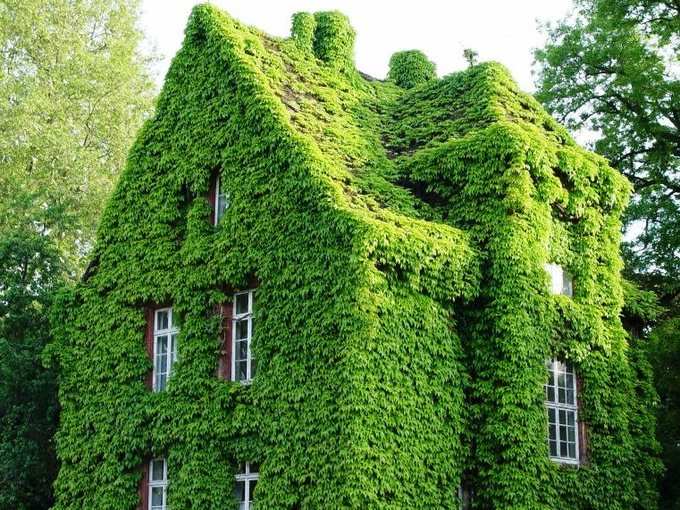
‘Save thy
environment’ is a cause that is not new in any way. The battle started long ago with scientists, researchers and technology experts highlighting the varied
climatic changes and their ecological impacts occurring across the world, most often with disastrous results. There are several on-the-face environmental scenarios that also pinpoint how the imbalance created by rapid urbanisation is accelerating the depletion of
natural resources. But this
ecological disparity is man-made and it is our responsibility to try and control it. And there can be no better way to act than starting it from your home.
On the macro level, green buildings or eco-friendly homes as a concept are at a nascent stage in India. As of now, it constitutes a very small percentage of the booming Indian real-estate market. But there is optimism among developers, governments and experts indicating, as a tremendous opportunity exists for expanding energy-efficient construction in India.
Also, the ‘green construction technology’ is a wide category, covering everything from energy-efficient appliances to
geothermal heating to
solar power to bio-degradable paints and many more. Given the breadth of this category, this article will narrow down the theme to three key product categories –
water closets,
faucets and tiles, elements that a home cannot do without. As every act counts, every micro step is a step towards a macro initiative and ultimately, the objective is to build a greener environment in and out of home.
Clean and
green technology is more advanced than ever before, and can be as beneficial for your wallet as it is for the Earth. What’s more, adopting or rather installing those products is not at all cumbersome. Plus, they are well-designed to match your taste. A variety of products are already there in the market and that will make designing your
green home even easier. Here are some simple choices to look at when you build your home or renovate it.
Water closets: Bathrooms happen to be the primary source of water and its usage. So the products used here are designed around eco-friendly technologies. The modern-day water closet is an intelligent toilet. The 3/6 litres per flush has become the norm and products like NANO, which uses 1.5 litre per flush, waterless urinals and star-rated, WEP-certified closets usher in a contemporary outlook to the concept of water-saving.
In India, we have already switched to energy-efficient appliances, ranging across various products, even the light bulbs. But when it comes to a stamp of approval for water-saving products, both awareness and a trusted certification seem to be missing. But things are now getting better, with the
International Association of Plumbing and Mechanical Officials (
IAPMO) issuing its
WEP certification. A safe and sustainable environment is everyone’s responsibility and IAPMO has taken the initiative to blend experienced leadership and broad resources, necessary to ensure a focused code development and produce model codes to help the industry and the consumer go green.
And the result? The WEP – 1 star-rated certification designed to provide information through labelling at the point of sale to consumers buying products that use water. A natural choice for authentication across the world with its 80 years of experience, IAPMO is equipped with the tools to build a better, more sustainable co-existence with the planet. So, if you have set your mind on being a wholehearted person looking to save our precious natural resources, choose from India’s first
water star-rated product and you can save over 50,000 litres of water per year. Over 10 models of
star-rated water closets are available under the Hindware Italian Collection, all in different shapes and designs. The choice lies with you.
Faucets: After water closets, faucets are probably the most used in a house! Be it your washroom or kitchen, faucets are in use every two minutes or so as you wash your hands or clean vegetables or rinse your crockery. So is it possible to do without water and a faucet? The answer is – no.
However, what you surely can do is to choose the right faucet to lessen
water wastage. Several ranges are available in the market, which are technologically smart, in tune with consumers’ diverse styles and requirements, of superior quality and offer best value for money. The single-lever faucet mixes hot and cold water smoothly, made possible by the new cartridge technology incorporated in the faucets. Then there is the quarter-turn faucet, a traditional two-handle faucet with the ability to turn from full turn to half turn to quarter turn, as per usage. Not only does it make the entire experience better, but it also helps reduce water consumption without compromising on the water pressure.
Modern faucets use a technology called the
faucet aerator. It adds air to the stream of water coming out of the faucet by breaking the water into fine droplets. Finally, there are the sensor-operated,
pressmatic faucets. They have a standard,
predetermined water flow timer, which controls
water flow for every usage.
Flooring: The main purpose of floor tiles is protection. But technological advancements such as digital-printed,
glazed vitrified tiles and stain-free, multi-charged vitrified tiles offer plenty of designs and surface finish options like marble, wood, stone, rustic, metallic, satin and matt. High-definition,
multi-colour digital printing technology offers the perfect replacement of natural marble and wooden flooring. These are technically superior and reduce the consumption of precious natural resources. GRIHA-certified tiles are easily available in the market today, and the product range reaffirms the commitment towards our environment. Once you install them, you become a part of the go-green community as well.
In short, the best way to design a green home is to make the most of the space and elements around you. This includes using
natural light and environment-friendly materials & products. Your home can run on the beauty and wonders of nature, with a
minimal carbon footprint.
About the author: Sandip Somany is the JMD of HSIL Ltd.
Image: Wikipedia
